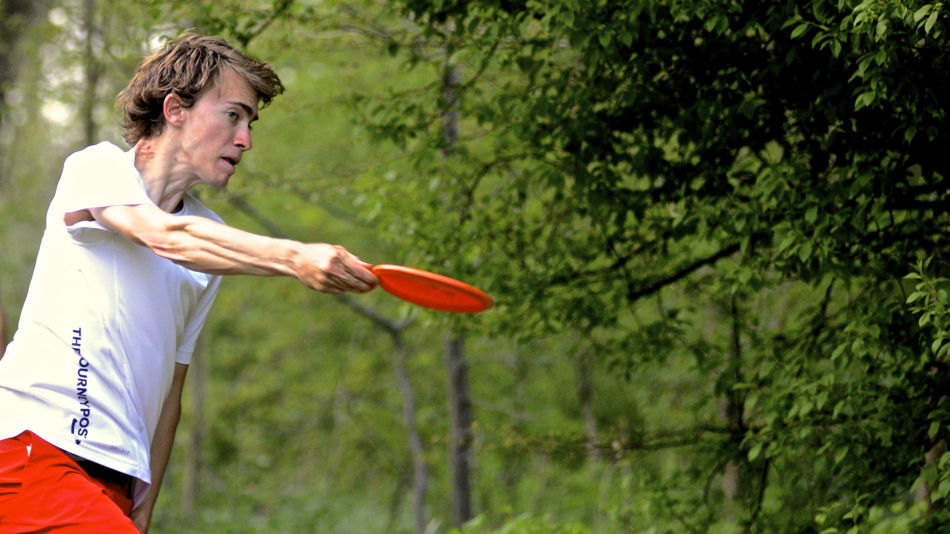Nose angle is relative to its trajectory and can change throughout its flight. You can throw upward with the nose down(this is where the real distance is, throwing nose down through the apex of flight). You can throw downward with the nose up(air bounce/break). If you throw a flat trajectory with the disc level, it's going to rise because the nose is not down. Drivers typically require a couple degrees nose down to remain on a level trajectory as has been discussed in the articles linked in your understability thread and shown in the wind tunnel results.
https://www.dgcoursereview.com/dgr/resources/articles/angles.shtml
https://www.dgcoursereview.com/dgr/resources/articles/distancelines.shtml
This is common for having sequence/acceleration and posture issues aka strong arming/slipping. You should be later than 3 preferably around 4 to 5 at the rip. This is not something you achieve by trying to hold on later, but it is a byproduct of the proper swing mechanics to bring the edge of the disc around forward further.
I agree with you that in your OP stated you don't roll the wrist to change shots. However your post later mentioned you get some spin by rolling the wrist. Now again you say you don't roll. So?
To be clear, when you say some people roll under for anhyzer, you do mean pronate? What happens if you roll over/supinate? Would it go flat, hyzer, or roller?
The angles in your reachback are opposite of what pretty much everybody considers them.
https://www.dgcoursereview.com/dgr/resources/articles/telegraphing.shtml
IMO this is because your weightshift sequence and timing mechanics are incorrect.
That is a fantastic philosophy, I also believe in it! :thmbup:
Now if only you would change your philosophy on the mechanics. :\
I'm going to have to respectfully disagree with some of ^ that.
Firstly the setup stance should be slightly closed with the front foot heel inline to the rear toes.
Secondly at #4 you are going to lose a lot of power and accuracy and momentum pausing in the transition between the backswing and forward swing, if you were fully loaded from the ground up it's one continuous fluid move back and forth that can't be stopped. You never see a golfer stop at the top of the backswing or a pitcher, pretty much every sport has a continuous windup phase and transition forward. Pelvis should be shifting forward during the end of backswing into the transition and squatting into the rear leg with the pelvis internally rotating into the rear femur, then the rear plantar flexion drives the rear femur/hip opening/externally rotates turning the pelvis as most of your weight shifts into a braced front leg from toe to heel, the pelvis turns internally into the braced front femur with the front knee straightening, putting most of your weight on the front hip and clearing it out of the way.
The way you have labelled the rest of the upstairs through #7 is in sequential order, but they each should overlap some in a fluid swing. The weightshift is also late in your sequence. A scary part is how you mention the elbow reaching it's limit and the forearm coming around it, so it sounds like your elbow is a static pivot point(If that is the case I suspect that is where your elbow pain you mentioned sometimes happens in previous thread before comes from). The shoulder/elbow should clear out to the right some to release the lower arm and disc straight through forward to the target for the most part(there is some arcing outside mostly when the disc is brought around at the end).
8. Follow through balanced on the front leg with the rear leg moving forward behind the front leg as the arm swings all the way around. The rear shoulder should finish straight through inline(both shoulders inline) to the target line apex, while the rear arm may vary from 60 to 180 past the target line apex. The rear leg may get pulled through as well, depends on the shot and balance and momentum.
There is a bit more happening during the throw, but what the hell do I know? I'm just a loud mouthed shnook.
